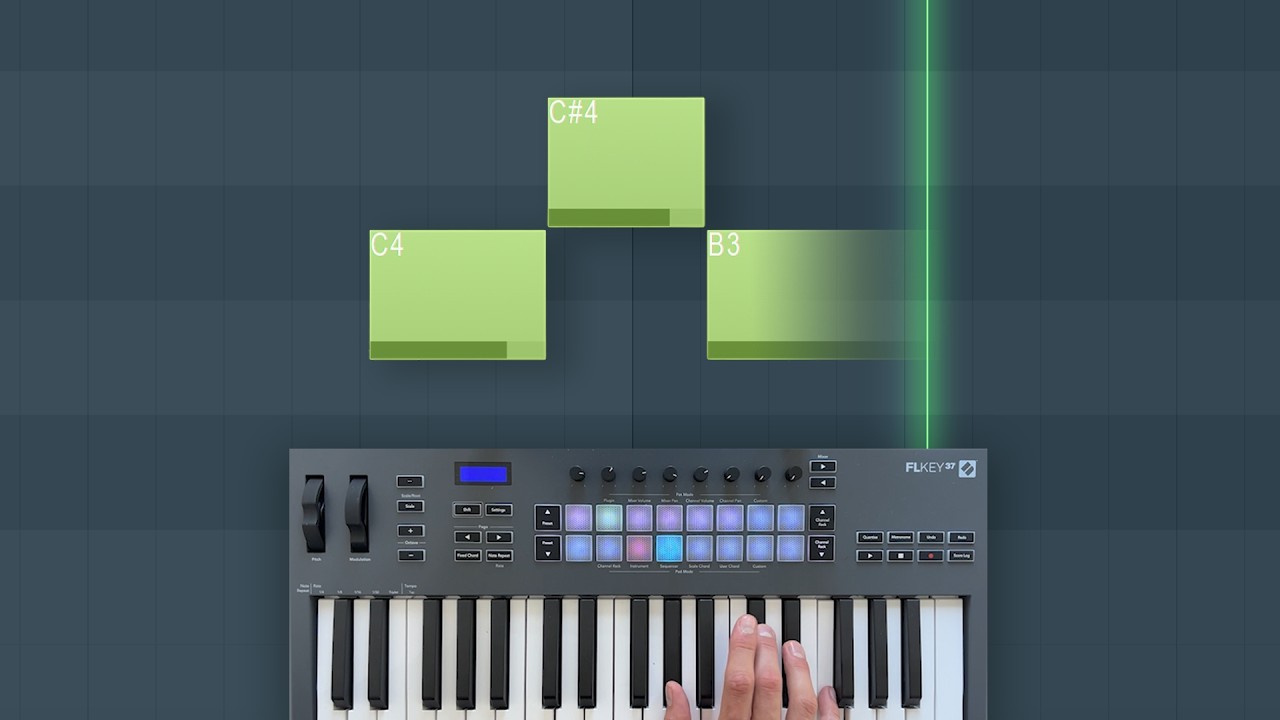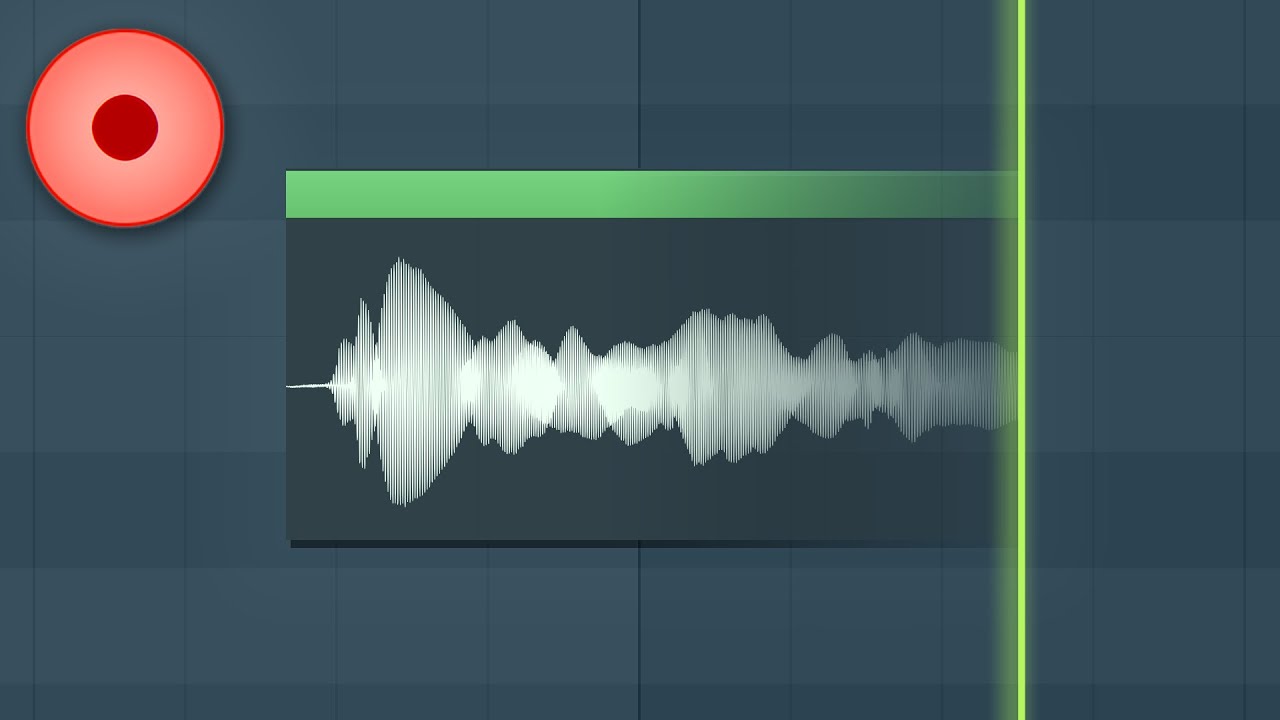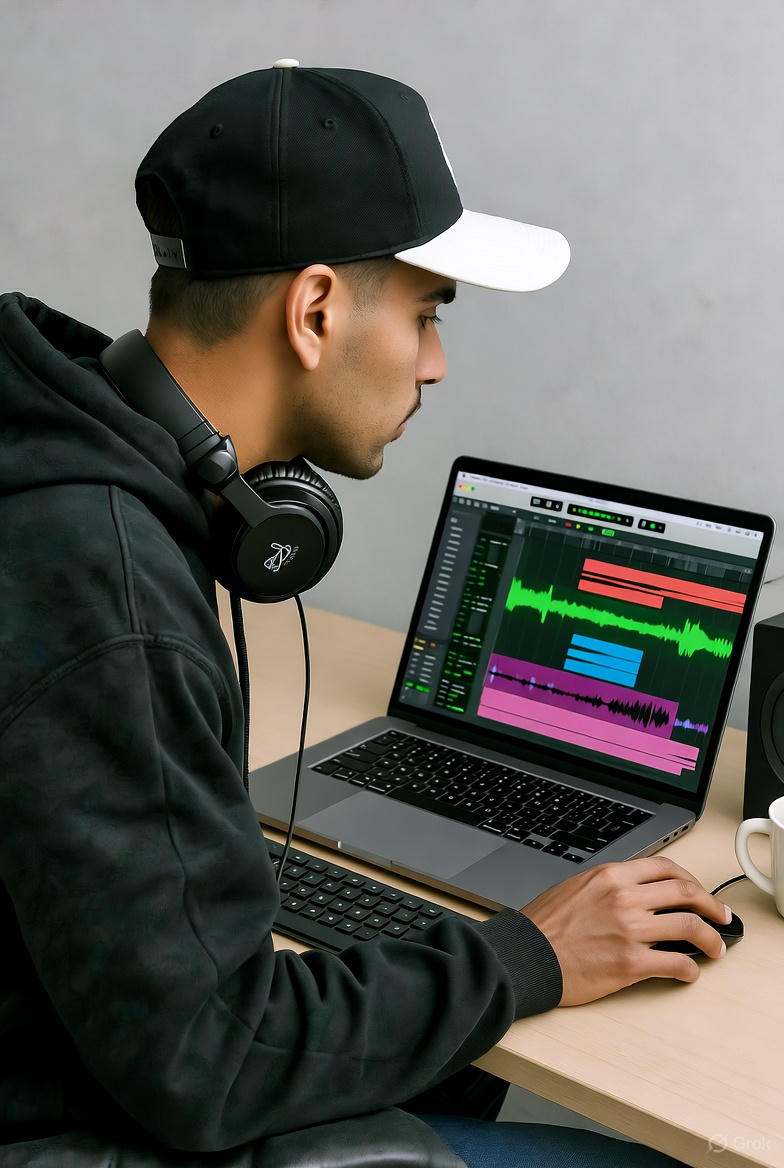!Let Us HELP YOU!
We have a lot of curated content on this blog.
Take this simple 20 second Quiz to Help You
Find The Exact Content You Are Looking For!
Beats form the underpinning of every genre, setting the groove that makes heads nod in hip-hop and bodies move in dance music. Yet most people never realize how much skill goes into each rhythmic layer. Consider this: hip-hop beats often rely on syncopated drum patterns and bass lines that can include over five distinct instrumental layers at once. That’s only scratching the surface. Some of the most captivating beats break free from formulas entirely, combining raw emotion with technical complexity that keeps listeners coming back for more.
Table of Contents
Quick Summary
| Takeaway | Explanation |
| Understand various beat types | Knowing different beat types enhances music production skills and creativity. |
| Master the basic beat first | A solid foundation in basic beats is crucial for more complex rhythms. |
| Explore cultural significance of hip-hop beats | Hip-hop beats reflect unique cultural expressions and require emotional storytelling. |
| Create engaging dance beats | Dance beats should maintain energy and motion to keep listeners engaged and moving. |
| Embrace imperfections in lo-fi beats | Lo-fi beats create emotional connections through simplicity and subtle textures. |
1: Introduction to Types of Beats
Beats represent the fundamental rhythmic foundation of music production, serving as the sonic heartbeat that drives genres from hip-hop to electronic dance music. Understanding the various types of beats is crucial for music producers looking to craft compelling and unique soundscapes.
According to Berklee College of Music, beats are more than just repetitive rhythmic patterns – they are complex musical elements that define a genre’s emotional and stylistic essence. For aspiring producers, mastering different beat types can transform raw musical ideas into professional-grade tracks.
The world of beat production encompasses a wide range of styles and techniques. Here are some key considerations for understanding beat types:
-
Rhythmic Complexity: Beats can range from simple, straightforward patterns to intricate, multilayered compositions
-
Genre Specificity: Each musical genre has unique beat characteristics that define its sound and feel
Whether you’re interested in creating type beats like a pro, understanding these foundational rhythmic structures will elevate your music production skills. Producers must recognize that beats are not just mechanical repetitions, but artistic expressions that communicate mood, energy, and cultural context.
As you explore the various types of beats in subsequent sections, remember that technical skill meets creative intuition. The most memorable beats are those that balance precise rhythmic construction with genuine musical emotion.
2: Understanding the Basic Beat
The basic beat represents the fundamental rhythmic pulse that drives musical composition, serving as the essential heartbeat of any musical piece. According to Carnegie Hall’s music education resources, understanding the beat is crucial for developing rhythmic skills and musical comprehension.
Musical beats are structured time units that provide consistent timing and structure for musical performances. They act as the invisible framework that musicians follow, creating a sense of predictability and flow in the music.
Key characteristics of a basic beat include:
-
Tempo: The speed at which the beat is played
-
Consistency: A steady, repeatable rhythmic pattern
-
Subdivision: How the beat can be divided into smaller rhythmic units
Producers working in digital audio workstations like FL Studio must develop a keen sense of beat construction. The basic beat serves as the foundation upon which more complex rhythmic structures are built.
Understanding beat mechanics involves recognizing how different musical elements interact with the foundational rhythm. Drums typically establish the primary beat, while other instruments complement and elaborate on this core rhythmic structure. Producers must learn to manipulate beat patterns to create tension, release, and emotional dynamics within their tracks.
Mastering the basic beat requires both technical precision and creative intuition. It demands an understanding of timing, groove, and the subtle nuances that transform a mechanical rhythm into a compelling musical experience. Professional producers recognize that a great beat is not just about mathematical accuracy but about creating a feeling that connects with listeners.
3: Exploring Hip-Hop Beats
Hip-hop beats represent a dynamic and complex musical language that has revolutionized modern music production. According to Princeton University’s research, these beats are far more than simple rhythmic patterns – they are intricate musical constructions rooted in cultural expression and technical innovation.
Hip-hop beats distinguish themselves through unique rhythmic characteristics that blend sampling, percussion, and electronic manipulation. They typically feature strong bass lines, syncopated drum patterns, and complex layered sounds that create a rich sonic landscape.
WEBSITE RESOURCES FOR MUSICIANS
Key elements that define hip-hop beats include:
-
Sampling: Using fragments of existing recordings to create new musical textures
-
Drum Programming: Crafting precise and innovative rhythmic sequences
-
Bass Emphasis: Creating deep, resonant low-end frequencies that drive the beat
Producers looking to master hip-hop beats must understand the genre’s rhythmic complexity. Learn how to create hard-hitting beats requires developing skills in digital audio workstations, understanding sonic layering, and capturing the nuanced groove that defines hip-hop music.
The evolution of hip-hop beats reflects broader musical and cultural shifts. From early breakbeat techniques using turntables to modern digital production methods, these beats represent a continuous dialogue between technological innovation and artistic expression. Producers must balance technical precision with creative intuition, transforming rhythmic elements into compelling musical narratives.
Successful hip-hop beat creation demands more than technical skill. It requires an understanding of cultural context, emotional resonance, and the ability to tell stories through rhythm and sound. Each beat becomes a musical statement, communicating complex emotions and experiences through its unique sonic architecture.
4: The Essence of Dance Beats
Dance beats represent a powerful musical form that transforms rhythmic energy into physical movement, creating sonic landscapes that compel listeners to dance. According to research in electronic music production, these beats are meticulously constructed sonic architectures designed to generate continuous, infectious momentum.
Dance beats are characterized by their consistent pulse, driving rhythm, and carefully engineered sonic elements that create an immersive musical experience. Unlike other beat types, dance beats prioritize continuous motion and emotional engagement through precise rhythmic structures.
Key characteristics of exceptional dance beats include:
-
Steady Tempo: Maintaining a consistent beat that sustains dance floor energy
-
Dynamic Progression: Introducing subtle variations to maintain listener interest
-
Bass-Driven Foundations: Using low-frequency elements to create physical resonance
Producers seeking to master dance beats must understand the intricate balance between repetition and innovation. Creating compelling R&B dance instrumentals requires technical skill and an intuitive understanding of musical flow.
The architecture of dance beats involves complex layering of percussion, synthesizers, and electronic elements. Successful producers create beats that feel both familiar and surprising, using techniques like subtle rhythmic shifts, unexpected sound design, and strategic build-ups and breakdowns.
Ultimately, dance beats are about creating a shared musical experience. They transform individual listeners into collective dancers, breaking down barriers through pure rhythmic communication. The most powerful dance beats transcend mere technical proficiency, becoming conduits of emotional expression and communal energy.
5: Characteristics of Trap Beats
Trap beats represent a distinctive musical style that emerged from Southern hip-hop, characterized by complex rhythmic structures and dark, atmospheric soundscapes. According to Britannica’s music research, these beats are distinguished by their unique sonic architecture and cultural significance.
Trap beats are defined by their intricate musical elements that create a powerful, immersive sound experience. They typically feature aggressive rhythmic patterns and heavy electronic influences that set them apart from traditional hip-hop production.
Key characteristics of trap beats include:
-
Rapid-fire Hi-Hat Patterns: Quick, staccato percussion that creates tension
-
Booming 808 Sub-Bass: Deep, resonant bass frequencies that provide sonic weight
-
Synthesizer Melodic Elements: Complex electronic sounds that add harmonic depth
Learn the intricacies of creating trap beats requires understanding the nuanced production techniques that define the genre. Producers must master digital audio workstations and develop a keen sense of rhythmic complexity.
The sonic landscape of trap beats is deliberately designed to create emotional intensity. Producers use sophisticated sound design techniques, including pitch-shifted vocal samples, dramatic synthesizer sweeps, and strategically placed percussive elements that create a sense of anticipation and release.
Mastering trap beats demands more than technical skill. It requires an intuitive understanding of musical tension, cultural context, and the ability to create sonic experiences that resonate with listeners on both emotional and physical levels. Each beat becomes a narrative, telling a story through its rhythmic and melodic construction.
6: Creating Lo-Fi Beats
Lo-fi beats represent a unique musical genre that emphasizes relaxation, introspection, and subtle sonic textures. According to Oxford Scientific Research, these beats are characterized by their intentionally imperfect and minimalist approach to music production.
Lo-fi beats are distinguished by their warm, nostalgic sound and deliberately unpolished production techniques. They typically feature soft, jazzy chord progressions and gentle, repetitive rhythmic patterns that create a calm and contemplative atmosphere.
Key elements of lo-fi beat creation include:
-
Simple, Repetitive Drum Patterns: Creating a steady, relaxed rhythmic foundation
-
Vintage Sound Textures: Incorporating subtle background noise and analog imperfections
-
Minimalist Melodic Structures: Using sparse, atmospheric musical elements
Explore the art of crafting poetic rap beats can provide insights into the nuanced techniques used in lo-fi production. Producers must develop a keen sense of sonic subtlety and emotional resonance.
The production of lo-fi beats often involves sampling, digital manipulation, and careful sound design. Producers create layers of sound that feel simultaneously nostalgic and contemporary, using techniques like pitch manipulation, vinyl crackle effects, and soft synthesizer textures.
Ultimately, lo-fi beats are about creating an emotional landscape. They invite listeners into a meditative space, offering a sonic retreat from the fast-paced, high-intensity world. The most compelling lo-fi beats transform simple musical elements into profound emotional experiences, proving that musical complexity is not always about technical virtuosity but about creating genuine connection.
7: Crafting Electro Beats
Electro beats represent a cutting-edge musical form that blends electronic manipulation with precise rhythmic structures, pushing the boundaries of modern music production. These beats are characterized by their futuristic sound design, complex synthesizer patterns, and innovative sonic textures.
Electro beats emerge from a fusion of electronic music techniques, featuring dynamic synthesizer elements and precisely programmed percussion that create an intense, immersive musical experience. They stand apart from other beat types through their experimental approach to sound creation.
Key characteristics of electro beats include:
-
Synthesizer Manipulation: Creating complex, evolving electronic sounds
-
Precision Drum Programming: Developing intricate, machine-like rhythmic patterns
-
Sound Design Innovation: Exploring unconventional audio processing techniques
Explore advanced melodic techno beat production techniques to understand the nuanced approaches used in crafting sophisticated electronic rhythms. Producers must develop a deep understanding of digital sound manipulation and synthesis.
The creation of electro beats involves sophisticated digital audio workstation techniques, including layered synthesizer programming, complex modulation effects, and precise rhythmic sequencing. Producers use cutting-edge software to transform electronic signals into dynamic musical expressions, blending algorithmic precision with creative intuition.
Ultimately, electro beats represent more than just a musical style. They are a sonic exploration that challenges traditional musical boundaries, transforming electronic signals into powerful emotional experiences. The most compelling electro beats create entire worlds of sound, inviting listeners to experience music as a living, breathing technological landscape.
The table below provides a comprehensive summary of the seven main types of beats discussed in the article, highlighting their defining features, unique elements, and the skills needed for effective production.
| Beat Type | Key Characteristics | Unique Elements / Focus | Producer Takeaways |
| Basic Beat | Steady, repeatable pulse; foundation of all rhythms | Consistency, tempo, subdivision | Essential to master for building complex tracks |
| Hip-Hop Beat | Layered, syncopated; bass-heavy; cultural storytelling | Sampling, complex drum programming, groove | Emphasizes technical skill and cultural resonance |
| Dance Beat | Continuous, driving energy; immersive; floor-oriented | Steady tempo, bass-driven, dynamic progression | Balances repetition with creative motion |
| Trap Beat | Aggressive, dark, complex rhythmic structure | Rapid hi-hats, booming 808s, synth melodies | Focus on sonic tension, intensity, and culture |
| Lo-Fi Beat | Relaxed, nostalgic, intentionally imperfect | Simple drums, vintage textures, minimal melody | Simplicity and emotional connection |
| Electro Beat | Futuristic, intricate, experimental electronic manipulation | Synth programming, innovative sound design | Technical mastery and creative exploration |
| Producer Skills | Mastery of different beat types enhances creativity and style | Blending technical proficiency with intuition | Enables genre versatility and unique sound |
Take Your Beat-Making Skills Beyond the Basics
Have you ever felt overwhelmed by the complexity of beat types or struggled to move from understanding core rhythms to crafting real-world tracks? Many producers know the frustration of wanting to create unique beats—whether it’s hip-hop, trap, or EDM—while feeling limited by genre-specific knowledge, DAW workflows, or missing the right tools. Your drive to master everything from basic beats to trap rhythms and electro soundscapes deserves a resource that speaks your language.
Now is the time to upskill and connect every lesson you learn to hands-on results. Visit How to Make Beats Blog where you will get easy-to-follow tutorials for FL Studio, expert insights on trap beat creation, real reviews of the latest gear, and step-by-step guides on making instrumentals in every genre. No matter what type of beat you want to master next, you can find walkthroughs and practical advice right here. Dive in today and make your next beat your best one ever.
Frequently Asked Questions
What are the different types of beats in music production?
The main types of beats in music production include basic beats, hip-hop beats, dance beats, trap beats, lo-fi beats, and electro beats. Each type has its own unique characteristics and is utilized across various musical genres.
How can I create effective hip-hop beats?
To create effective hip-hop beats, focus on sampling, drum programming, and emphasizing bass lines. Understanding the rhythmic complexity and cultural context of hip-hop is also essential for crafting compelling beats.
What defines electro beats compared to other types of beats?
Electro beats are distinguished by their dynamic synthesizer elements, precise drum programming, and innovative sound design. They emphasize experimental electronic manipulation and complex rhythmic structures that push musical boundaries.
What are the key elements of dance beats?
Key elements of dance beats include a steady tempo, dynamic progression to maintain listener interest, and bass-driven foundations that create a physical resonance, enhancing the energy on the dance floor.



